The Vibrant Cuervo y Sobrinos Historiador Gran Premio de Cuba 1957
A flamboyant watch to capture the spirit of the iconic 1957 Cuban Grand Prix.
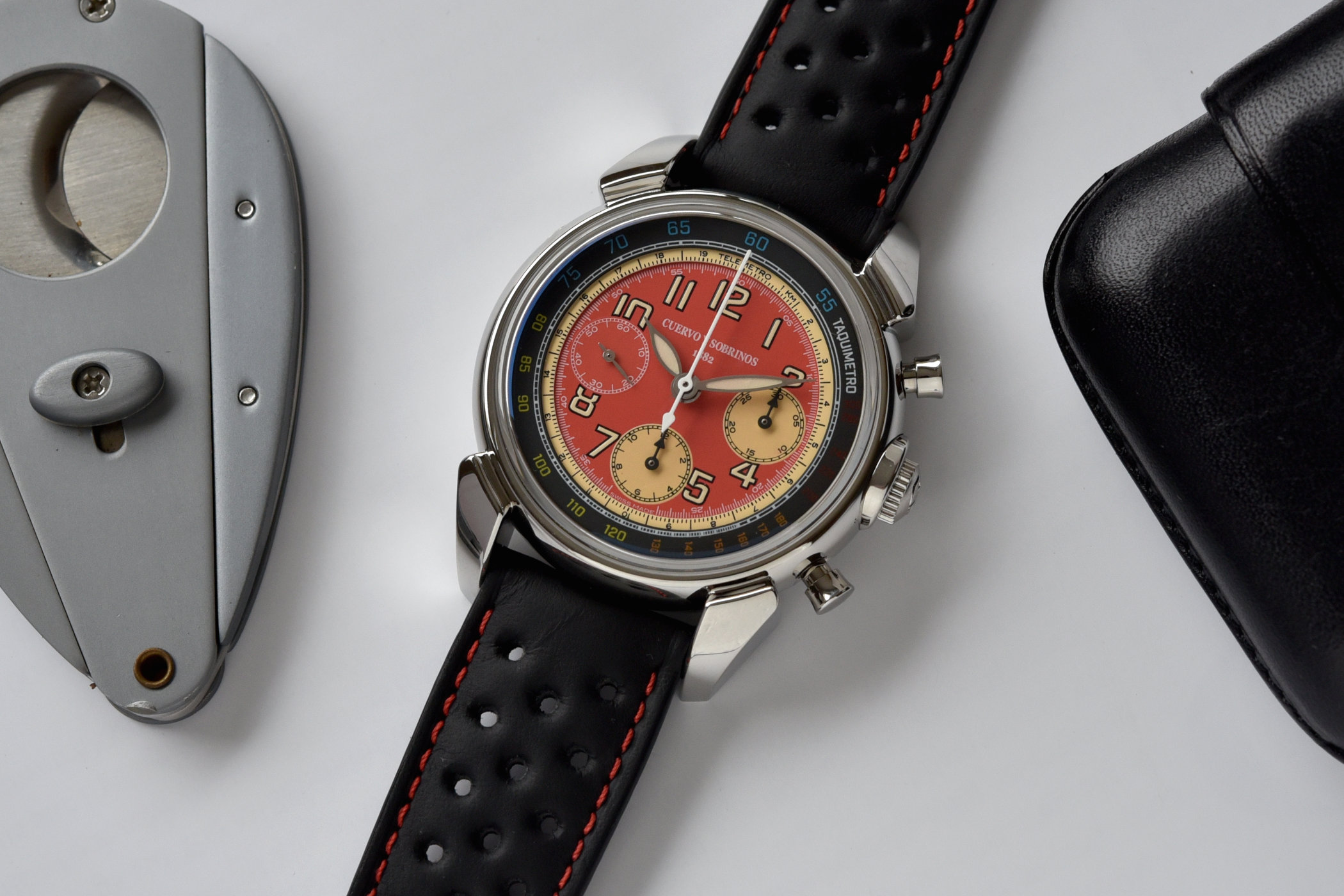
Anyone who has but even the smallest love for cars and racing knows about names like Fangio, Moss, Shelby, Hill and many others. Men battled it out on racing circuits around the world to see who was best in open-wheel Grand Prix cars or sports cars by Ferrari, Maserati, Aston Martin, Jaguar and the likes. Famous events like the Targa Florio, Mille Miglia, and Carrera Panamericana are embedded in the collective minds of us all. A shortlived yet fascinating chapter in racing is the Gran Premio de Cuba, racing along the shores of the Cuban capital Havana. Dedicated to the inaugural running of the event, Cuban-rooted watchmaking brand Cuervo y Sobrinos recently introduced the Historiador Gran Premio de Cuba 1957. In typical CyS flamboyancy, it captures the essence of Cuba’s only Grand Prix in history.
The event was organised by Fulgencio Batista, a military officer and politician that had a lasting impression on the island. In a bid to attract more tourists to Cuba, a place where celebrities like Ernest Hemingway would flock to, Battista would invite some of the biggest racing names of the era. They would race up and down the Malecón, the esplanade that stretches along the coast of Havana. The circuit that was constructed was around 5,5km long and the race would be 50 laps in total for a racing distance of 162 kilometres (roughly). The first race was won by Juan Manuel Fangio in a Maserati 300S with Stirling Moss winning both the 1958 and 1960 editions (in a Ferrari 355S and Maserati Tipo 61 respectively). Below is a clip, with no sound sadly, of what is believed to be the 1957 race;
To bring the spirit of the Gran Premio de Cuba to life, Cuervo y Sobrinos uses the flamboyant Historiador case that takes inspiration from historical CyS models. It measures 42mm in diameter and 12mm in height, which seems quite reasonable. The fully polished case gives it a great deal of wrist-presence thanks to the design of the lugs, a signature element of the Historiador. The pushers have a simple design but flair out a little to give them some character. The crown looks different from other Historiados thanks to its unusual crown protector. A double-domed sapphire crystal sits on top of the case, with a solid caseback around the back (more on that in a bit). The water resistance is rated at 30m, letting it down a little bit in my book. A finishing touch is the embedded push-button on the left side of the caseband to adjust the date.
The real attraction comes from the predominantly red-and-cream dial, which is inspired by the colours of the Maserati 300S that was piloted to victory by Fangio in 1957. Around the outer edge is a sloped flange in black with a multi-coloured tachymeter scale. To keep things authentic with the brand’s Cuban heritage, it’s labelled Taquimetro, which to me is a nice touch! This is connected to the rest of the dial with a fine white railroad track and a cream-coloured telemeter scale on the inside. The centre section of the dial has a faded Tropical red tone, with printed beige hour indices and beige subdials for the chronograph indications.
The chronograph subdials really stand out thanks to the contrasting colours, but also due to the black hands and scales. The central hands for the hours have a leaf shape, with beige luminous inserts. The small seconds hand is fully polished, while the central chronograph seconds stands out in full white. The finishing touches are the white printed name of the brand, small seconds scale and the minute track. The mix of colours and different indications, along with the depth of the dial construction, give it plenty of character and have a distinct retro appeal that ties it to the event and Fangio’s Maserati.
Hidden under the solid caseback, that bares the insignia of the 1957 Cuban Grand Prix, is the automatic CyS 8099. This is based on the tried-and-tested Valjoux 7753 cam-operated chronograph. This runs at a rate of 28,800vph and offers a running time of 48 hours when fully wound. Although you cannot see it, the rotor is decorated and engraved. Next to the central hours and minutes, this indicates small seconds and the chronograph with central seconds, 30-minute counter and 12-hour counters at 3 and 6 o’clock.
To complete the racing theme of the Historiador Gran Premio de Cuba 1957, Cuervo y Sobrinos has fitted it with a classical black leather perforated racing strap. This comes with a steel folding clasp that proudly carries the openworked CyS emblem. Limited to 162 pieces only, a direct reference to the distance covered by the racers in the 1957 Cuban Grand Prix race, the watch retails for EUR 3,700.
For more information, please visit CuervoySobrinos.com

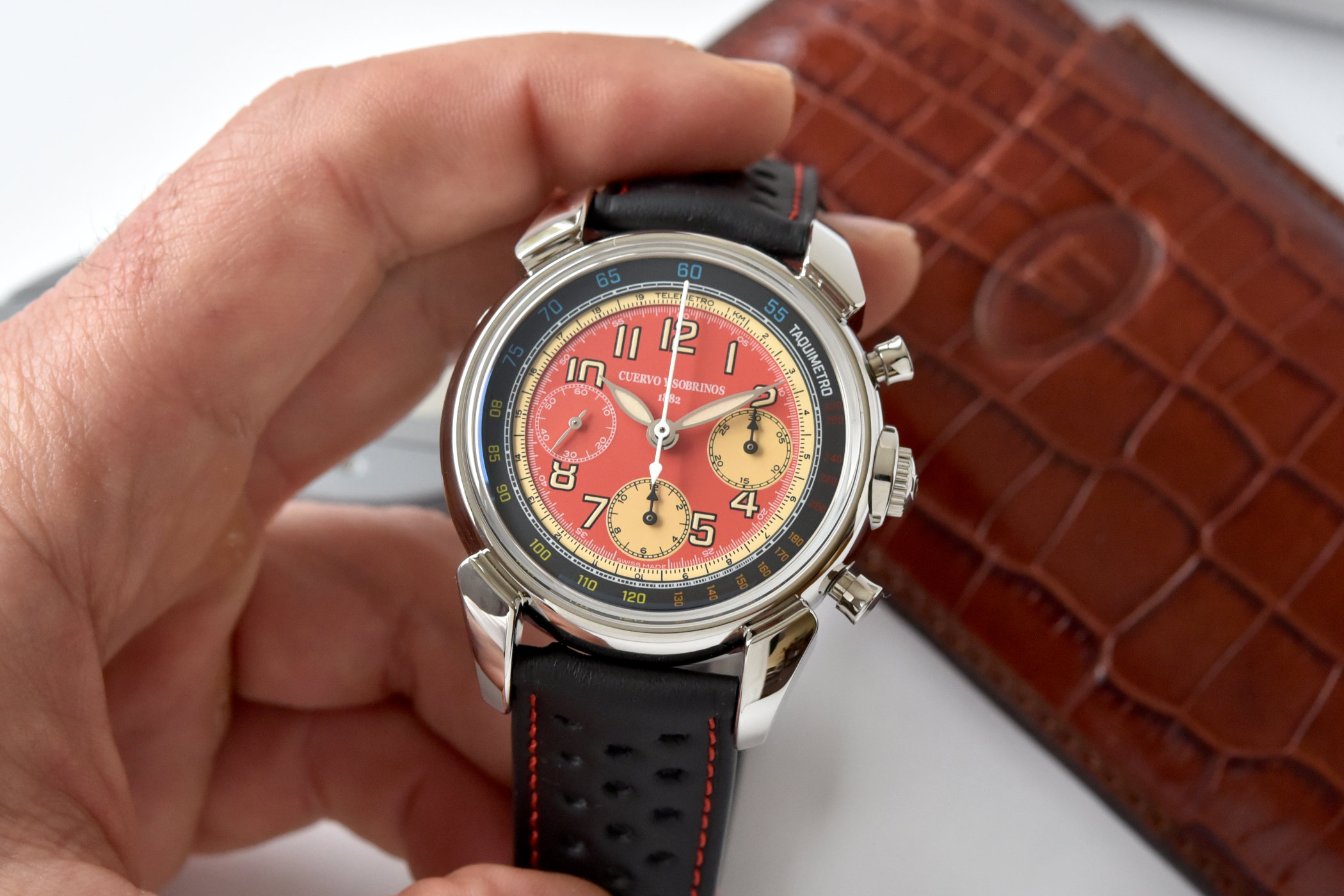
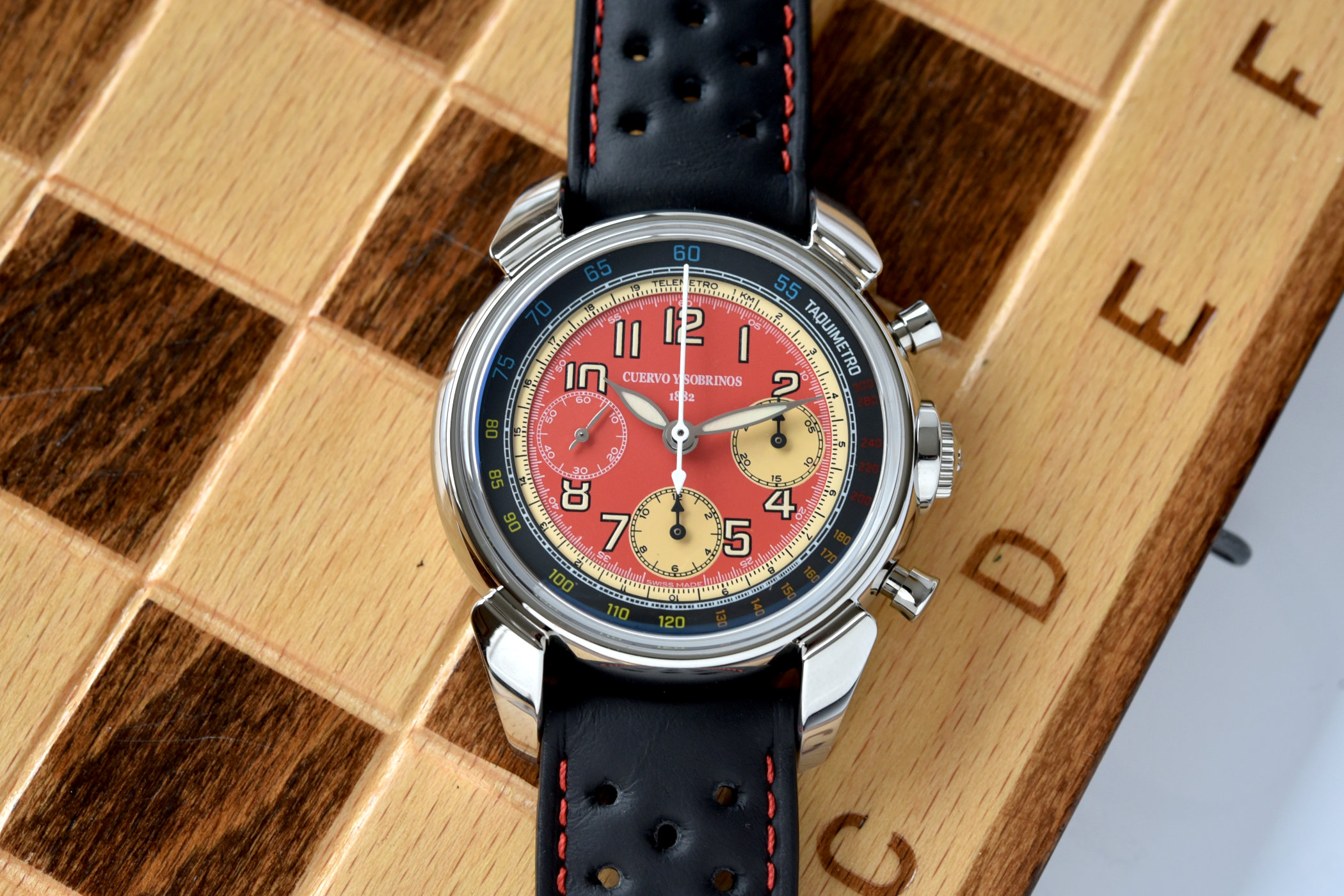
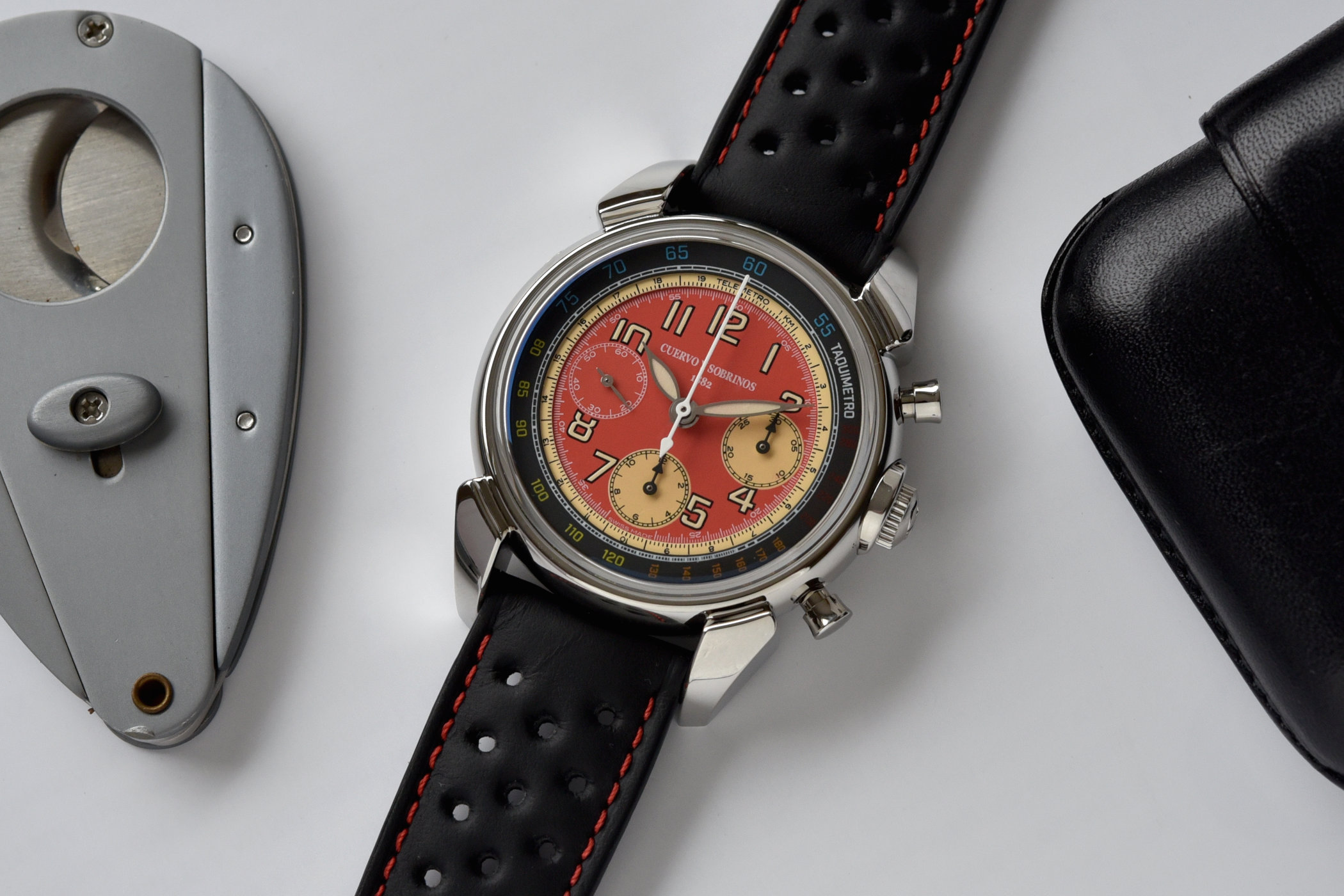
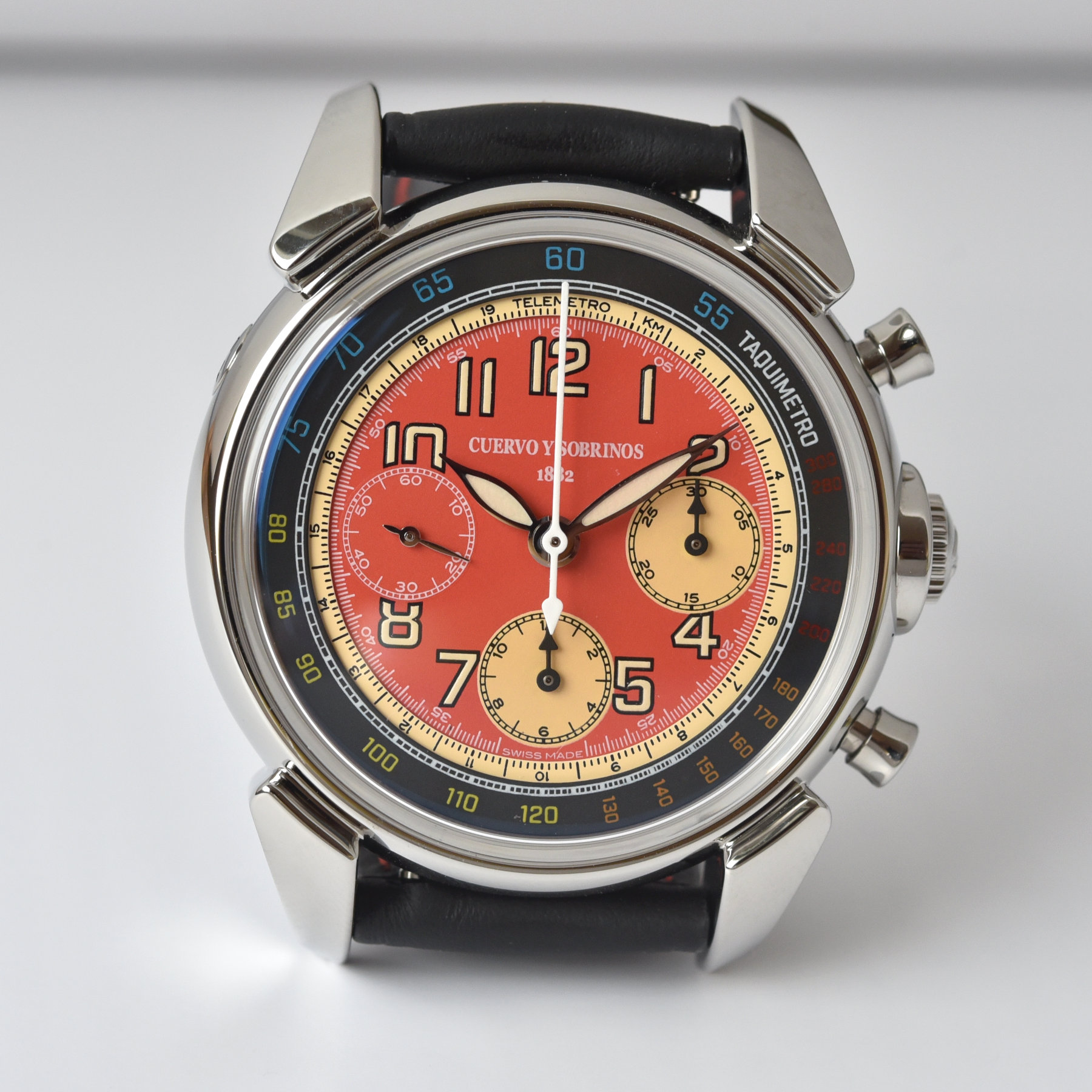


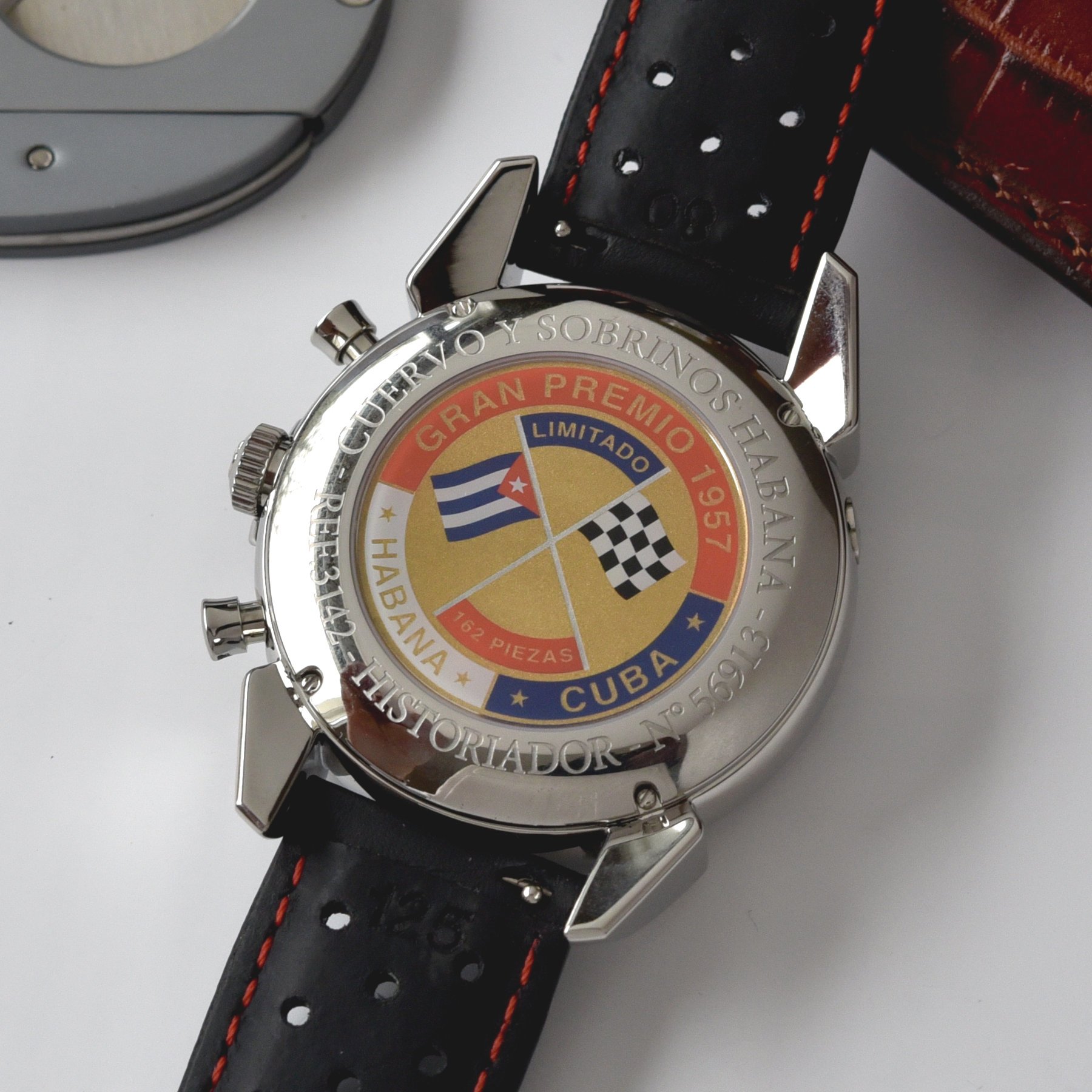



5 responses
“It measures 42mm in diameter and 12mm in height”. Did you use a caliper? From the photos of their website the profile looks more like 14-15mm, which is significant.
“El evento fue organizado por Fulgencia Battista, militar y política que dejó huella en la isla”
Con su permiso acuso la falta de rigor periodístico : Se llamó Fulgencio Batista (era hombre, no mujer) y no solo dejó huella en la isla. La esquilmó mientras estuvo en el poder, robando su patrimonio a base de una enmarañada red de testaferros. Además de ser un dictador asesino que huyó de Cuba cuando fué quitado del mando del país en 1959 (por la vía de las armas) por Fidel Castro, otro espécimen que a la larga se enquistó en el poder sumiendo a Cuba en medio siglo de miserias y régimen dictatorial. En 1958, poco antes del triunfo fidelista, Fangio fué secuestrado por la gente de Fidel impidiéndole participar en el Gran Premio de Cuba de ese año.
“The event was organized by Fulgencia Battista, a military and political figure who left a mark on the island”
With your permission, I accuse the lack of journalistic rigor: His name was Fulgencio Batista (he was a man, not a woman) and he not only left his mark on the island. He fleeced her while was in power, stealing her assets through a tangled network of front men. In addition to being a murderous dictator who fled Cuba when he was removed from command of the country in 1959 (by force of arms) by Fidel Castro, another specimen who eventually entrenched himself in power, plunging Cuba into half a century of misery. and dictatorial regime. In 1958, shortly before Fidel’s triumph, Fangio was kidnapped by Fidel’s people, preventing him from participating in that year’s Cuban Grand Prix.
Hola Robin, me alegra que arreglaras el “Fulgencia” pero aún te queda el “Battista” con 2 t. Se apedillaba Batista con una sola t.
Por cierto, las gracias se incluyeron en los idiomas con el objetivo de agradecer una buena acción recibida. Muchas gracias por prestarle atención a los comentarios.
Hello Robin, I’m glad you fixed the “Fulgencia” but you still have the “Battista” with 2 t. Batista is with a single t.
By the way, the thanks were included in the languages ??with the aim of thanking a good deed received. Thank you very much for paying attention to the comments.